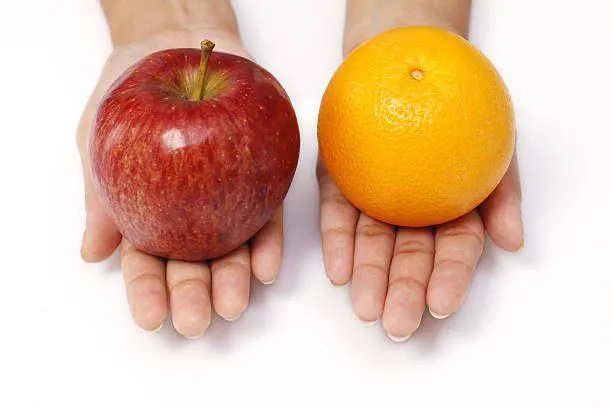Salience NeuroRehab
Blogs and Articles
What's on our mind??

Brain food to assist with neurological changes in the brain

"Let food be thy medicine and
medicine be thy food."
Hippocrates
Healthy foods that can may assist with brain recovery and promote neuroplastic changes
Neuroplasticity is the brain's ability to change and grow due to different experiences and stimulation. There are different ways to enhance the nutrients to aid in neuroplastic changes in the brain.
One way is with increasing the brain-derived neurotrophic factor (BDNF) which is a protein that encourages the growth of new neurons and synapses. This is an important factor for aiding in neuroplasticity after an individual experiences a stroke or brain injury.
There are foods rich in brain-boosting vitamins and minerals that assist with increasing BDNF levels such as a diet that is rich in polyphenols and omega-3s.
Salmon (EPA) Omega-3 fatty acids help maintain brain-derived neurotrophic factor levels and promote neuroplasticity. Fatty fish like salmon contain an omega-3 fatty acid called EPA (Eicosapentaenoic acid). While the body produces some EPA on its own, consuming EPA can help during stroke recovery. It is one of the top vitamins for stroke patients that can be consumed naturally through your diet.
Flaxseeds (Alpha-Linolenic Acid) Flaxseeds are a great source of alpha-linolenic acid (ALA), which is an omega-3 fatty acid that can only be obtained through the diet since your body cannot produce ALA on its own.
Nuts and Seeds (Vitamin E) Nuts and seeds are a good source of vitamin E, which is associated with decreasing the risk of cognitive decline with age. Vitamin E is also important for stroke recovery improve cognitive function because of its antioxidant properties that protect the cells from free radical damage.
Avocados (Oleic Acid) The areas in your brain responsible for processing information rely on oleic acid to perform at optimal speed. This is an ideal nutrient to include in your diet after a stroke, especially if you struggle with cognitive difficulties. One food that is rich in oleic acid are avocados, which are also a great source of antioxidants and protein.
Quinoa Studies have shown that plant-based foods, such as whole grains, can lower the risk of stroke. A popular type of whole grain is quinoa. Quinoa is rich in fiber and contains all of the amino acids that are necessary to form a complete protein. Complete proteins are the proteins the body cannot produce on its own but need to repair cells and make new ones.
Greek Yogurt Greek yogurt is a great source of calcium and protein. Greek yogurt is also an excellent source of probiotics, which promote gut health and may also reduce future risk of stroke.
Legumes Legumes are a class of vegetables that are great during stroke recovery because they are excellent sources of potassium, iron, and protein. Different types of legumes to include in your diet after a stroke include beans, lentils, and peas. Beans in particular are rich in magnesium which helps with neuroprotection.
Fruits are some of the top foods for stroke recovery because they are rich in flavonoids and antioxidants. Flavonoids help reduce inflammation and ischemic damage after a stroke. They also help lower cholesterol and blood pressure, which is good news as high cholesterol and high blood pressure are two of the leading causes of stroke. Antioxidants help reduce damage from free radicals, which are harmful compounds produced when the body breaks down food or caused by exposure to smoke and radiation. Because fruits are rich in both flavonoids and antioxidants, they are an excellent addition to a healthy diet after stroke.
Blueberries (Flavonoids) Berries in general are an easy addition to this list of foods for stroke patients. Blueberries in particular contain flavonoids that help boost the production of BDNF. Flavonoids have also been shown to lower cholesterol and help improve overall cognitive function and neurodegenerative diseases like Alzheimer’s.
Pomegranate (Antioxidants) Pomegranates are another excellent fruit to enjoy during stroke recovery. They are high in potent antioxidants, which help protect the brain and body from the damage caused by free radicals. Fruits with antioxidants helps strengthen your immune system.
Cherries (Antioxidants) Cherries are high in antioxidants and assist with inflammation caused by free radicals. They also assist with protection against cellular damage.
Citrus Fruits (Vitamin C) Citrus fruits, such as oranges and grapefruit, are not only great sources of vitamin C but are also a great source of flavonoids. The flavonoid content found in citrus fruits help protect brain cells, strengthen blood vessels, and reduce inflammation. Citrus fruits can also help reduce stiffness in the blood vessels, which can help lower the risk of stroke. Grapefruit is among the top citrus fruits for stroke patients because of the predominant flavonoid known as naringenin.
Apples (Fiber) Apples are rich in antioxidants and fiber, particularly pectin. Pectin is a highly soluble fiber that can help lower and maintain cholesterol levels. This aids in preventing plaque buildup and reducing the risk of stroke by keeping arteries healthy.
Tomatoes (Lycopene) Lycopene is a plant-derived nutrient that provides neuroprotective benefits and can help lower the risk of stroke. Tomatoes are a rich source of the antioxidants, making them a great part of a healthy diet for stroke patients, but have a high salt content which could increase blood pressure.
Please consult your doctor about which diet is best choice for you.
Kuester, Lacy. (2002). Top 10 Foods to Boost Your BDNF. https://amosinstitute.com/blog/top-10-foods-to-boost-your-bdnf/.
Cherry, Kendra, MSEd. (November 08, 2022). What Is Neuroplasticity?. https://www.verywellmind.com/what-is-brain-plasticity-2794886.
